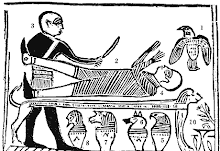I'm hoping that this can be a place to explore mystical elements of Mormon belief. I stumbled across a blog from a fellow who had literally written the book on Mormon mysticism, but from everything I could tell his idea of mysticism is just deep reading of the scriptures and kabbalistic texts. For him, it seemed that mysticism just means any theology that takes a lot of reading to figure out. This isn't my idea of mysticism, so I guess I'd better explain what I have in mind as far as that goes.
I was listening to the radio the other day, and I heard a radio program which featured an improv troupe from Chicago. They go around town and orchestrate strange happenings in which the unwitting participants have an unshakable feeling that something freakish is happening, outside of normal possibilities. For example, on a particular subway line, one person after another got on the train wearing no pants. After the car was loaded with pants-less people, a vendor came down the aisle selling pants.
I think that mysticism is sort of like that: it explores a world in which there are more possibilities than one might usually assume. I think that religion for the vast majority of Mormons occurs in a world where which fits neatly within the reality of their gentile neighbors, where nothing is amiss. For them, religion is defined by mandates and directives from HQ, and official interpretations of scripture, and theology explained in flow charts and diagrams. All of this is institutional in nature, top down.
On the other hand, I think there are many elements inherent in Mormon belief that operate in a different world, full of unexpected possibilities. These possibilities are created through personal choice and personal belief, quite independent of intstitutional practice. To generalize, we might say that many of these mystical practices are defined by the use of physical objects to effect tangible pro-active changes in destiny, cosmos, or knowledge. More common of these approaches would include priesthood applications with consecrated oil; fasting to alter fate; interpretation of dreams; prophesy using seer stones; water witching or other divination using sticks or rods, etc.
I would like to explore some of these ideas.
 At left, one of Joseph's seer stones which was present on the altar of the Manti Temple at it's dedication.
At left, one of Joseph's seer stones which was present on the altar of the Manti Temple at it's dedication.


